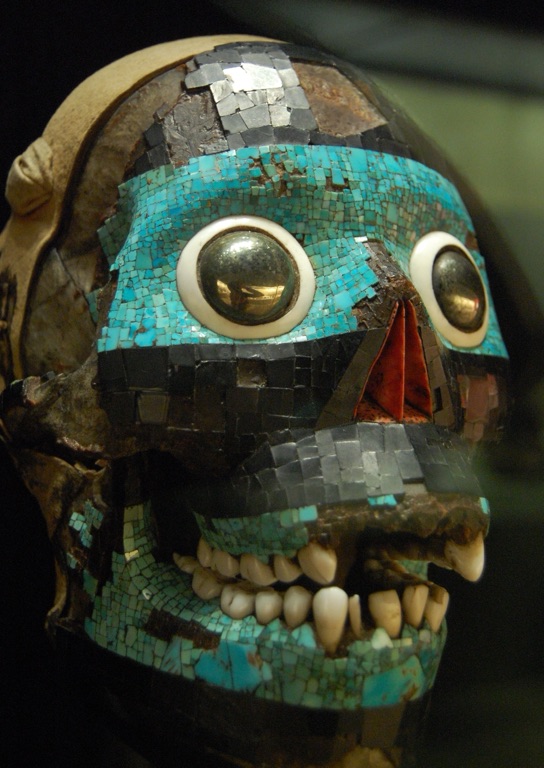Introduction to Tezcatlipoca
Overview of Tezcatlipoca
Tezcatlipoca, whose name translates to “Smoking Mirror” in Nahuatl, stands as one of the most complex and significant deities in the Aztec pantheon. Originating from pre-Columbian mythology, Tezcatlipoca is associated with a wide array of concepts including the night sky, the earth, rulership, divination, temptation, and warfare. His significance in Aztec religion is profound, embodying the omnipresent and omnipotent nature of a god who could influence the fate of humanity and the cosmos.
Get your dose of History via Email
The Mythology of Tezcatlipoca
Tezcatlipoca’s mythology is rich with tales of his deeds, powers, and conflicts with other deities, notably Quetzalcoatl. One of the most famous myths describes how Tezcatlipoca and Quetzalcoatl created the world and humanity by transforming themselves into giant serpents and ripping apart the earth monster, Cipactli, to form the land and the sky. This myth underscores Tezcatlipoca’s role as a creator god, despite his more fearsome aspects.
Tezcatlipoca in the Aztec Pantheon
In the Aztec pantheon, Tezcatlipoca was considered a central figure, often depicted as a rival to Quetzalcoatl, the feathered serpent god. While Quetzalcoatl was associated with creation, culture, and fertility, Tezcatlipoca represented the darker aspects of the cosmos, such as destruction, conflict, and change. This duality between Tezcatlipoca and Quetzalcoatl reflects the Aztec worldview of balance between opposing forces.
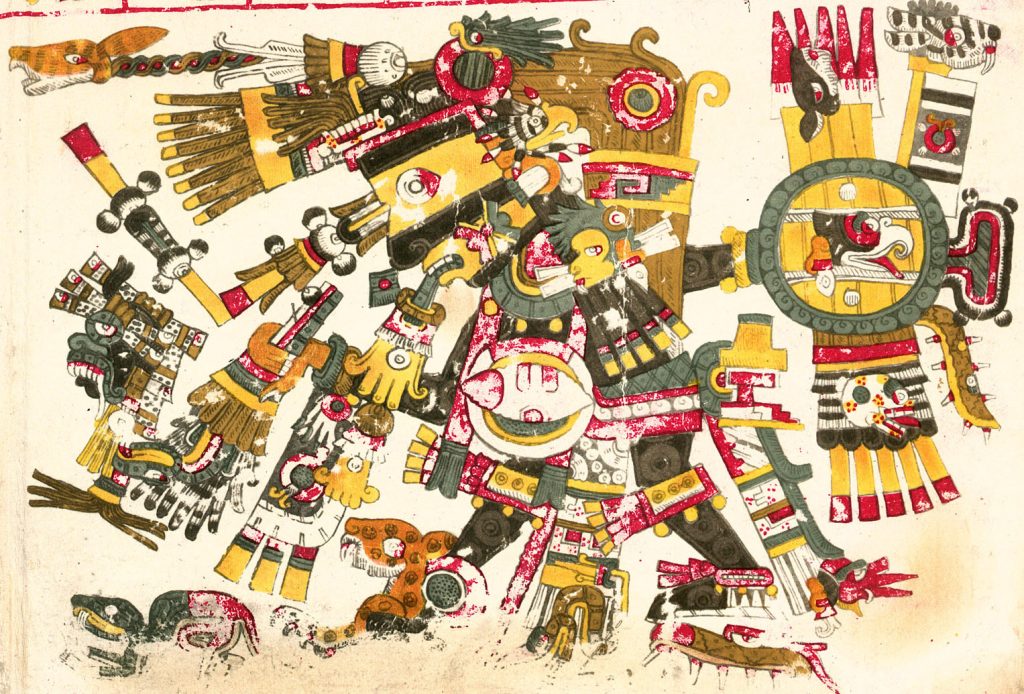
Aspects and Symbols of Tezcatlipoca
The Many Aspects of Tezcatlipoca
Tezcatlipoca was known by many epithets, each reflecting a different aspect of his divine nature. As the “Smoking Mirror,” he was associated with divination and the unseen. As the “Night Wind,” he embodied the unseen forces of change and chaos. These aspects highlight Tezcatlipoca’s multifaceted nature, capable of bringing both fortune and disaster.
Symbols Associated with Tezcatlipoca
Key symbols of Tezcatlipoca include jaguars, representing his earthly power and ferocity; obsidian mirrors, used in divination and reflecting his connection to the unseen; and the night sky, symbolizing his omnipresence and dominion over the world. These symbols are recurrent in Aztec art and mythology, underscoring his importance.
Tezcatlipoca’s Role in Creation Myths and the Cosmos
Tezcatlipoca played a pivotal role in Aztec creation myths, often acting as a catalyst for creation and destruction. His involvement in the creation of the world, humanity, and the cycles of the cosmos illustrates his integral role in shaping the Aztec universe.
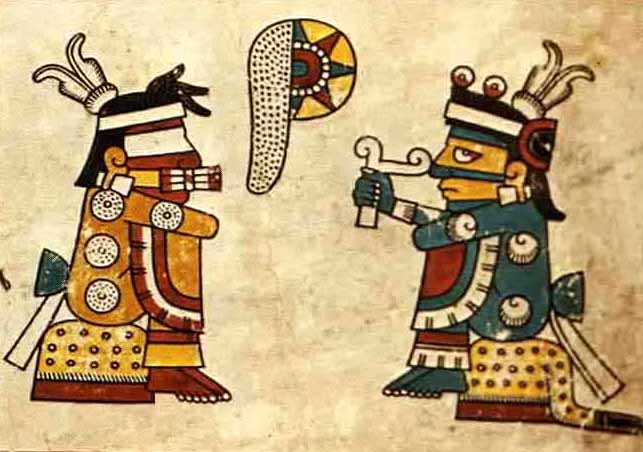
Worship and Rituals
Historical Practices of Worship
Tezcatlipoca was worshipped across the Aztec Empire, with major temples dedicated to him, such as the Templo Mayor in Tenochtitlan. The priesthood of Tezcatlipoca was a significant institution, responsible for conducting rituals and maintaining his cult.
Key Rituals and Ceremonies
The Toxcatl festival, held in the fifth month of the Aztec calendar, was among the most important ceremonies dedicated to Tezcatlipoca. It involved a year-long preparation of a chosen individual to embody the god, culminating in his sacrifice. This ritual underscored the god’s association with death and renewal.
Human Sacrifice and Its Significance
Human sacrifice played a central role in the worship of Tezcatlipoca, reflecting his aspect as a demanding deity who required blood to maintain the balance of the cosmos. These sacrifices were not only acts of devotion but also served to reinforce social and political hierarchies within Aztec society.
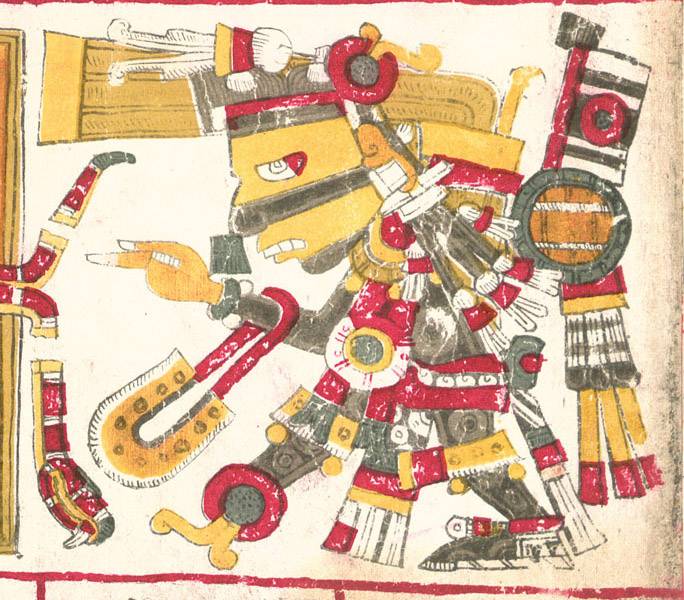
Tezcatlipoca in Aztec Society
The Influence of Tezcatlipoca on Aztec Leadership and Politics
Tezcatlipoca was closely associated with the Aztec ruling class, embodying the ideals of warriorship, leadership, and strategic cunning. Aztec rulers often sought to emulate Tezcatlipoca, invoking his protection and guidance in matters of state and warfare.
Tezcatlipoca’s Role in the Aztec Calendar and Agriculture
As a god of the night sky, Tezcatlipoca also influenced the Aztec calendar and agricultural practices. His celestial movements were closely observed for auspicious dates, and his favor was sought for successful harvests and fertility of the land.
Moral and Ethical Lessons Derived from Tezcatlipoca Myths
The myths of Tezcatlipoca offered moral and ethical lessons, emphasizing the values of strength, adaptability, and the acceptance of fate. His stories served as cautionary tales about the dangers of pride, deceit, and the inevitable cycles of change.
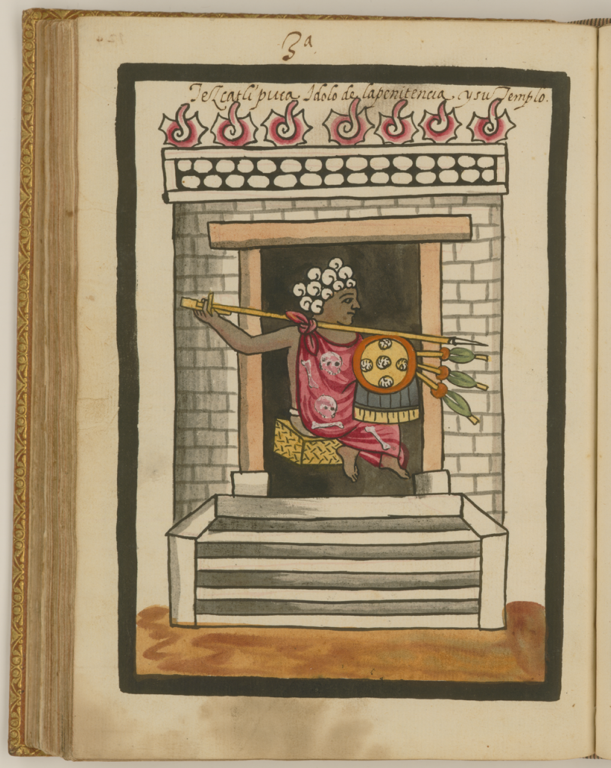
Art and Iconography
Depictions of Tezcatlipoca in Aztec Art
Tezcatlipoca was frequently depicted in Aztec sculptures, codices, and murals, often shown with his characteristic smoking mirror and jaguar motifs. These artworks not only served religious purposes but also acted as mediums for cultural expression and historical documentation.
Analysis of Specific Artworks Related to Tezcatlipoca
Specific artworks, such as the Tezcatlipoca sculpture from the Templo Mayor, reveal intricate details about his iconography and the symbolic meanings behind his depictions. These pieces provide insights into Aztec artistic techniques, religious beliefs, and societal values.
The Symbolism of Tezcatlipoca in Modern Mexican Culture
Tezcatlipoca’s symbolism has transcended ancient Aztec religion, influencing modern Mexican culture in various forms, from literature to visual arts. His enduring legacy reflects the deep historical roots and continuing relevance of pre-Columbian beliefs in contemporary society.
Comparative Mythology
Tezcatlipoca in Relation to Similar Deities in Mesoamerican Cultures
Tezcatlipoca shares similarities with other Mesoamerican deities, such as the Maya god Kukulkan, reflecting broader themes in Mesoamerican mythology such as creation, destruction, and the duality of life. These parallels highlight the interconnectedness of pre-Columbian religious traditions.
Comparative Analysis with Deities from Other Mythologies
When compared to deities from other mythologies, such as the Norse Loki or the Greek Hermes, Tezcatlipoca embodies the archetype of the trickster and creator god. This comparative analysis reveals universal themes in human spirituality, illustrating the diverse yet convergent ways cultures understand the divine.

